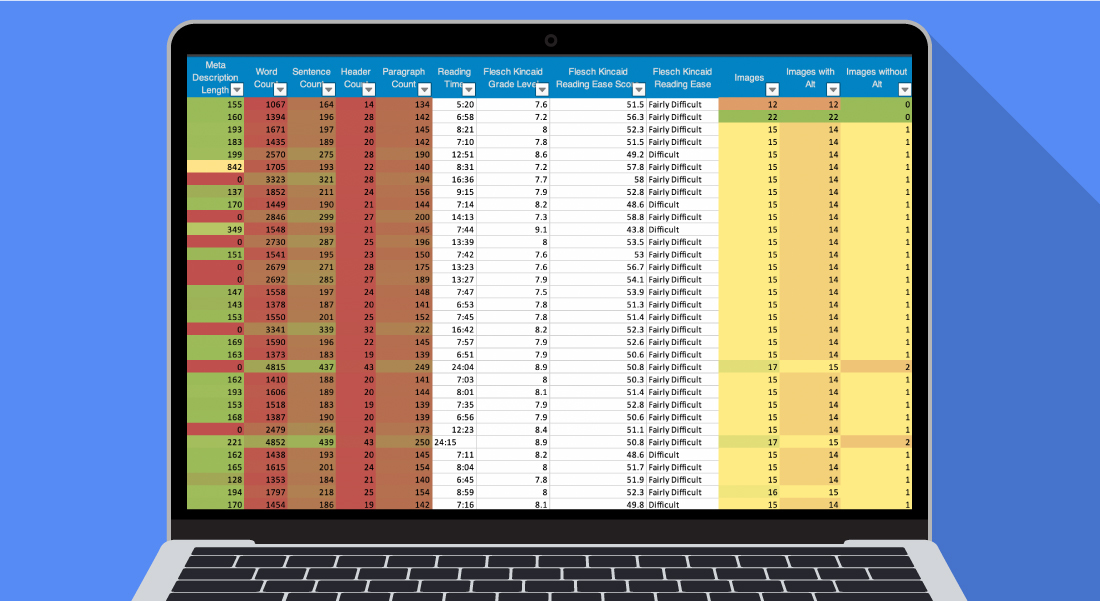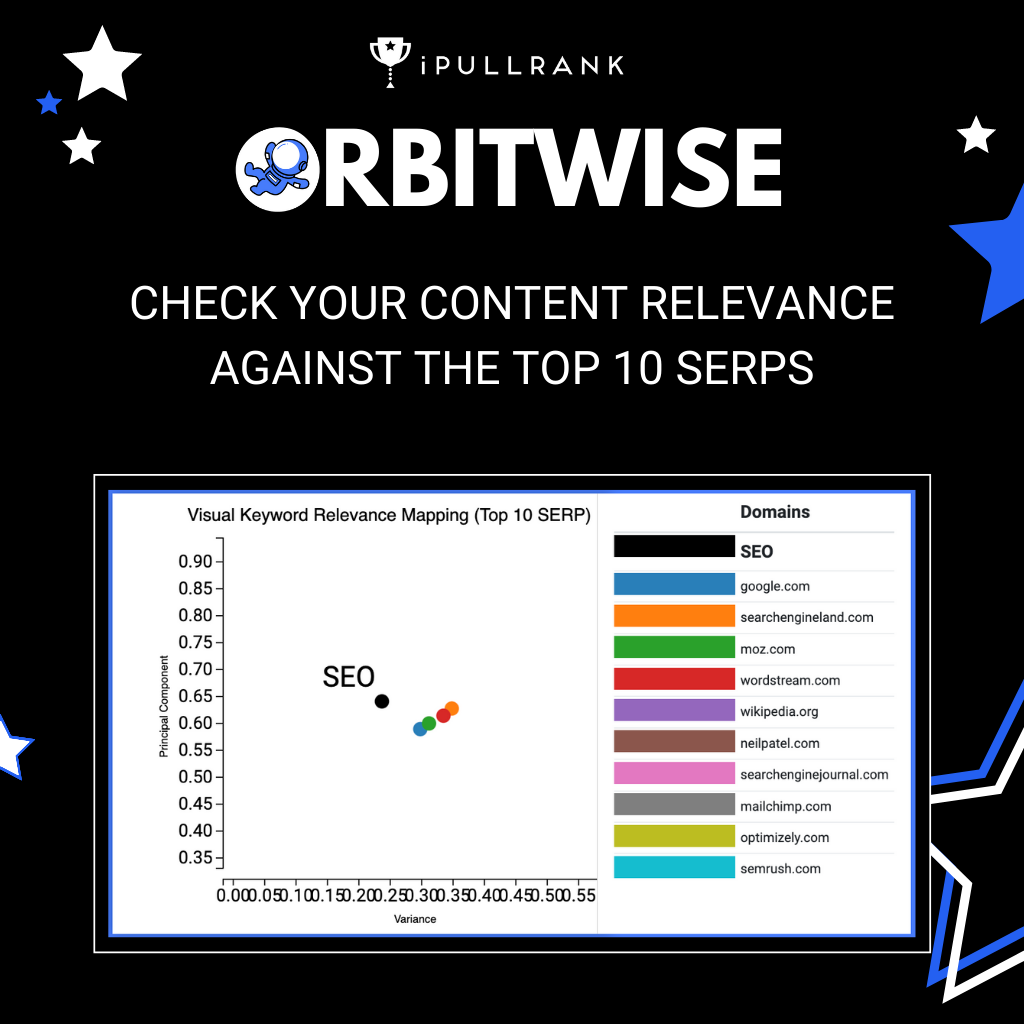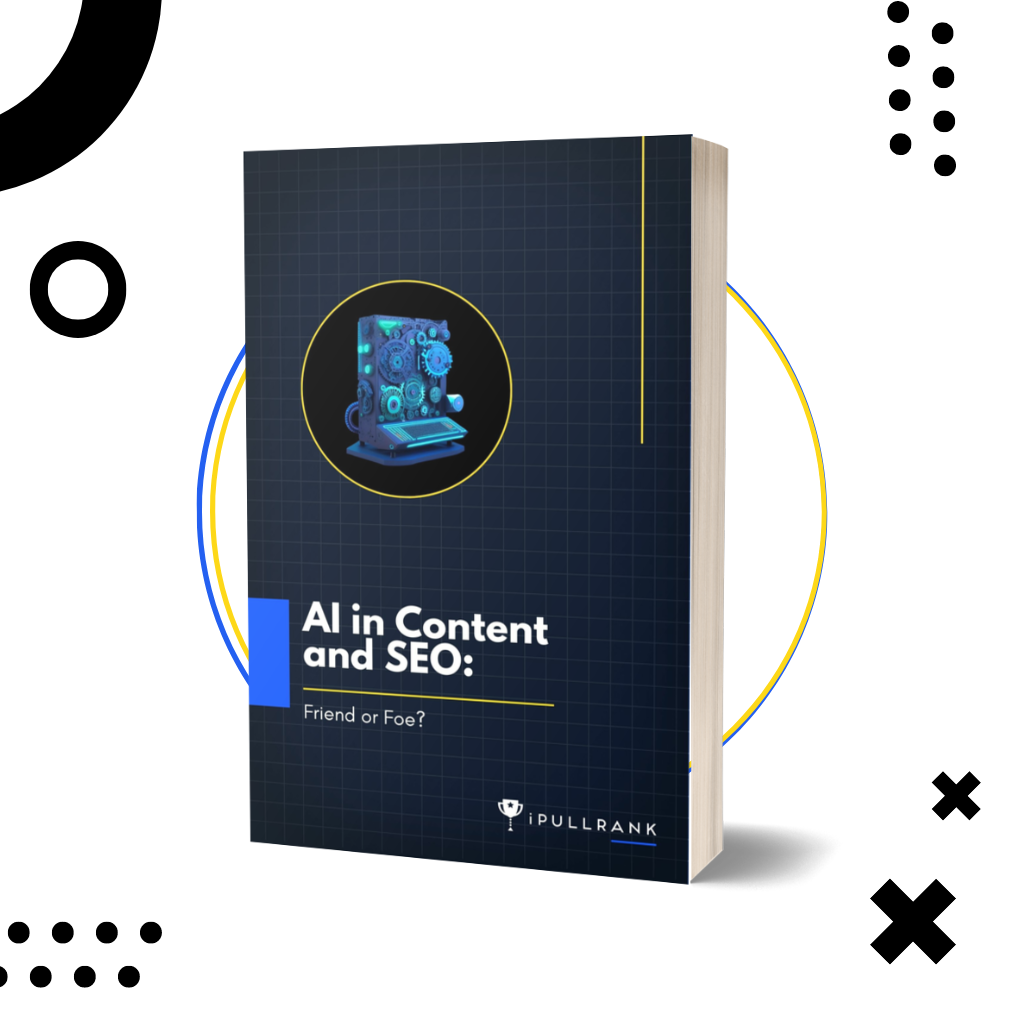What is a Content Audit
A content audit is a qualitative and quantitative evaluation of the current content situation on a website or blog. It is not an easy (or exciting) task, but it is one of the best ways to understand what you currently have on your website and it will help you create new content and determine which pages are actually worth keeping or not.
This process is a little bit like what Marie Kondo does, but for content. And instead of “does it bring you joy?” you’ll ask yourself if it brings ROI – or any other performance metric your brand prioritizes.
Why is a Content Audit Useful?

Let’s say that for the past 5 years your company has been creating content left and right. 5 posts a week that tackle every possible detail about your product. And for some reason, there hasn’t been any growth in traffic or you’re not hitting the SERPs. You now have 1300 blog posts that may or may not be performing as well as they could.
But also, in those 5 years, you had the pleasure to work with 3 different content strategists and one freelancer that just stayed with you for a month or so. And you’re not even sure what they were writing about 5 years ago.
A content audit will help you understand which kind of content actually performs well with your audience and which one could be deleted, repurposed, or edited.
Why Should Every Business Audit Their Content and How Often?
It all depends on how often you create content and how quickly you can make the changes needed to improve the articles, blog posts, etc. Ideally, a company should audit its content every quarter to make sure changes have been implemented and to understand what happened to the content after changes were made. Did people stay on the website longer? Did this URL get more traffic? Can I win some Featured Snippets?
Content audits made every six months can focus on updating links and improving underperforming content. Also, though generally boring, content audits are a great way to bring the content strategist’s attention to the current needs of the brand and what can/ should be done moving forward.
And if you’re performing a content audit annually, well, I’m glad you’re at least performing one.
Why do many businesses neglect content audits?
If content audits are such a great way to make sure:
- You’re not providing your customers with outdated information
- The hyperlinks, images, and videos are working
- You can improve content to hit the SERPs
- You’re making an impact with your audience
Why are businesses still not performing them? Creative content writers sometimes forget the need to excel at using… Excel and this time-consuming and boring task is not as exciting as getting the next content plan started.
If content writers sometimes want to make sure content audits exist, marketers tend to forget the importance of content to bring new customers. If you can just create new blog posts and pay for ads, why should you go back in time and look at something that was written in 2013? Because your customer, that was brought to your website through a PPC ad, is now seeing something you wrote years ago, and they’re not happy.
So if you’re ready to understand a little bit more about content audits, keep reading.
The Quantitative Side of the Content Audit:

The first step towards a good-looking content audit (the kind that makes you feel that you actually accomplished something instead of just feeling bored) starts with creating a content inventory. This inventory will include every URL to every blog post, FAQ, category, or tag page on your website. Only after creating your content inventory, you’ll be able to go after the quantitative information that’ll kickstart your heart, I mean, audit.
The quantitative content audit will then include:
- Page ID (a number for the page, so it’s easier to find it afterward)
- URL
- Path (or category or “where does this content live”)
- Page Title
- Title Length
- Description
- Description Length
- Word Count
- Images (with and without Alt if needed)
- Videos
- Readability
- Google Analytics data that you’d like to include (Bounce Rate, Users, Session Duration, etc.)
So, what should I do with it?
Well, after you’ve gathered all the qualitative data you can ask your excel spreadsheet a couple of questions, including:
- Why is this bounce rate so high?
- Why did someone create all of those titles with 140 characters or more?
- Does this content meet SEO requirements?
- Why do I have so much duplicate content?
- What is my audience really into?
- And, my all-time favorite:
- Why did the tool skip all the information for those 1,200 URLs? Should I just crawl them again? (More often than not the answer is yes). In case you’re still encountering some problems with the crawl, take a look at this article that can help you solve common problems with Content Audits.
The Qualitative side of the Content Audit:
With all the quantitative information in your hands and the right questions asked, you can move to the qualitative side of the audit, where we’ll take an in-depth look at the URLs chosen by you during the quantitative analysis.
Which URLs should you pick to judge them qualitatively? Well, it will depend on what you’re looking to optimize. Ideally, you’ll look at:
- Low-performing and irrelevant and unrelated content to the rest of your site, as well as very short pages or articles, usually less than 300 words; this way you’ll understand if it should be deleted or updated.
- High-performing content that can inform what your audience is looking for.
After selecting a relevant percentage of content to inform your qualitative content audit, you will provide information to the URLs according to their target persona, shareability, quality, and redundancy. Do include voice and tone notes, as well as comments and suggestions related to conversion and UX possibilities for the page.
And, what will you get from it? A roadmap that will guide your entire content strategy. Check out iPullRank’s content strategy and how we use the content audit to inform the next steps.
Improved User Experience
A quality Content Audit will be responsible for improving the User Experience by determining new CTA’s (Calls-To-Action) for each article, post, or page. Having a better understanding of the audience persona will also allow you to create better internal linking to make sure the reader gets the best information and experience possible without having to leave your website.
Improve Content Performance
Low-performing content and thin pages (the ones with less than 300 words) can be updated or deleted in order to improve the overall performance of the website. Sometimes it’s possible to determine how different pages cannibalize the keywords, in this case, it’s sometimes worth it deleting one of the pages while upgrading the other one.
Identify Content Gaps
Your website talks about how great the product is but it doesn’t mention exactly what it does? Take a look at questions being asked on search engines to make sure you’re actually answering all of them. Identifying content gaps will lead to better internal linking and new pages being featured on the SERP.
Improve Existing and Future Quality
That blog post from 2018 is still performing well? Maybe it’s time to breathe new life into it, with the inclusion of videos, images, graphs, and more information this content can keep a healthy and improved life. And now that you understand exactly what your audience is looking for it’s time to create new content that talks directly to their needs and wants.
What’s worth keeping, reusing, and repurposing?
Open your spreadsheet, take a look at both the qualitative and the quantitative analyses, or, even better, make a pivot table to help you report and analyze the trends. Take a look at the low-performing content and the URLs that you have graded as having low “shareability, quality and redundancy” and consider what is worth keeping, reusing, improving, or deleting.
How do you decide what’s worth keeping or deleting? Take another close look at the URLs, think if there’s something that could be improved, maybe take the E-E-A-T approach to decide if the content is good and worth living. When you work with enterprise sites, E-E-A-T principles can guide those updates.
You can also make connections between the content you currently have. See how they connect to each other. Maybe you can implement a ritual offering, where posts with dire performance that touches on the same topics as high-performance ones are deleted. You can transfer some of its content to the high-performance one as a way to repurpose parts of it and upgrade something that was already good.
Conclusion
At iPullRank, we approach content audits from a qualitative and quantitative point of view to show as many insights as possible. If you haven’t audited your content in a while, reach out to one of our Account Executives to see how we can help you immediately.
- Reasons Why You Need a Content Audit - September 25, 2020
- 3 Reasons to Integrate Visual Content Into Your Marketing Campaigns - July 8, 2020
- Christopher Hart, New Director of Revenue - February 13, 2020












Leave a Comment